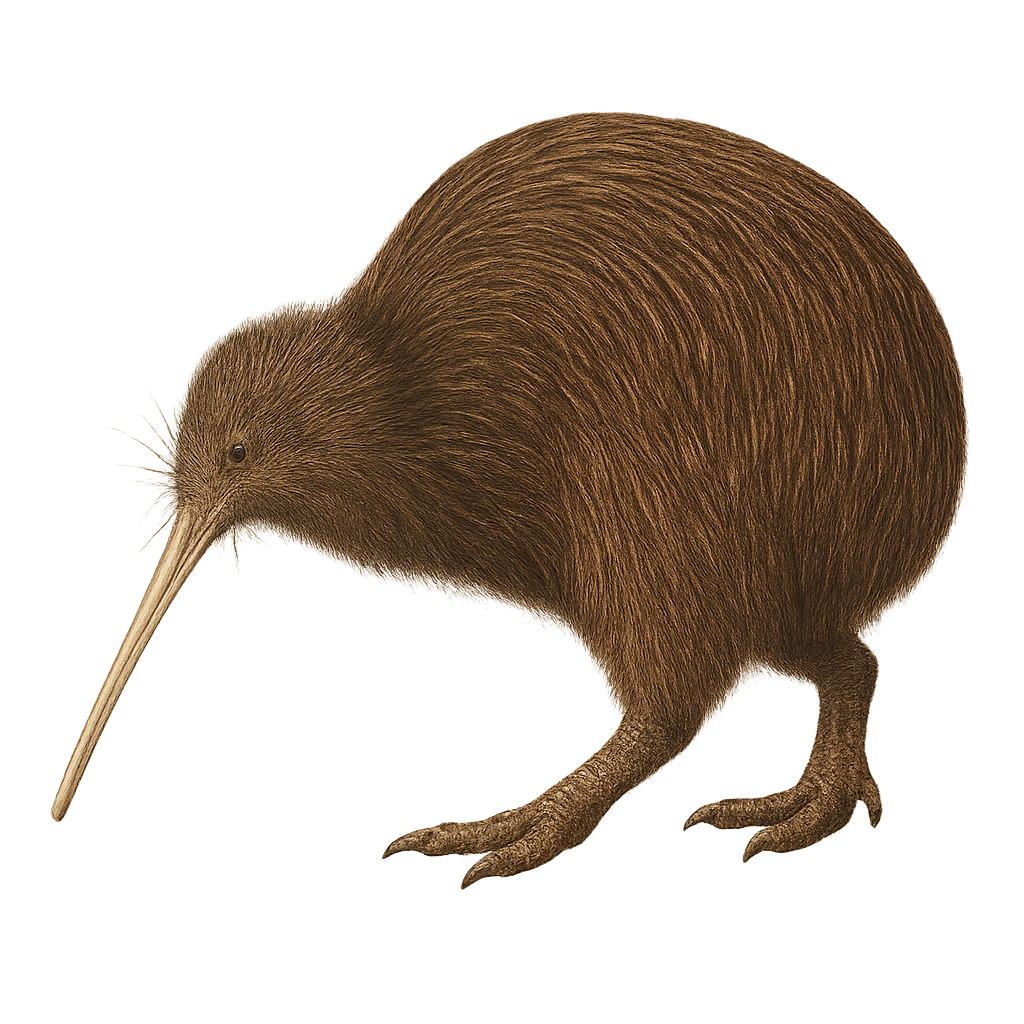Your wildlife photography guide.
Explore the north island brown kiwi in detail, study its behavior, prepare your shots.
Where to observe and photograph the north island brown kiwi in the wild
Learn where and when to spot the north island brown kiwi in the wild, how to identify the species based on distinctive features, and what natural environments it inhabits. The WildlifePhotographer app offers tailored photography tips that reflect the north island brown kiwi’s behavior, helping you capture better wildlife images. Explore the full species profile for key information including description, habitat, active periods, and approach techniques.
North Island Brown Kiwi
Scientific name: Apteryx mantelli

IUCN Status: Endangered
Family: APTERYGIDAE
Group: Birds
Sensitivity to human approach: Very shy
Minimum approach distance: 10 m
Courtship display: June to August
Incubation: 74-84 jours
Hatchings: August to November
Habitat:
dense forests, scrublands, grasslands
Activity period :
Mainly active at night, generally discreet during the day.
Identification and description:
The North Island Brown Kiwi, or Mantell's Kiwi, is a flightless bird endemic to New Zealand. It is characterized by its shaggy brown plumage, long slender bill, and nostrils located at the tip of the bill. This nocturnal bird feeds primarily on invertebrates, which it detects using its exceptional sense of smell. It inhabits dense forests, scrublands, and grasslands. The North Island Brown Kiwi is monogamous, forming long-term pairs. The female typically lays one or two eggs per season, which the male incubates. Unfortunately, this species is threatened by introduced mammalian predators and habitat destruction.
Recommended lens:
400 mm – adjust based on distance, desired framing (portrait or habitat), and approach conditions.
Photography tips:
To photograph the North Island Brown Kiwi, patience and discretion are key, as this bird is very shy. Focus on nighttime outings, as it is primarily active at night. Use a telephoto lens of at least 400mm to capture images from a distance without disturbing it. A tripod can be helpful to stabilize your camera in low-light conditions. Listen for rustling sounds in the soil, which indicate its presence. Finally, always respect its natural habitat and avoid disturbing its fragile environment.
The WildlifePhotographer App is coming soon!
Be the first to explore the best nature spots, track rutting seasons, log your observations, and observe more wildlife.
Already 1 432 wildlife lovers subscribed worldwide

